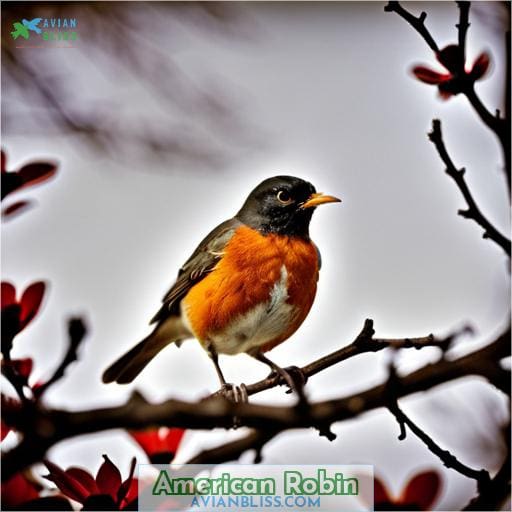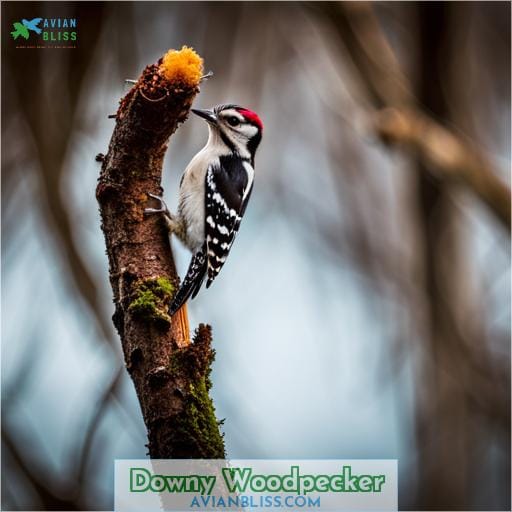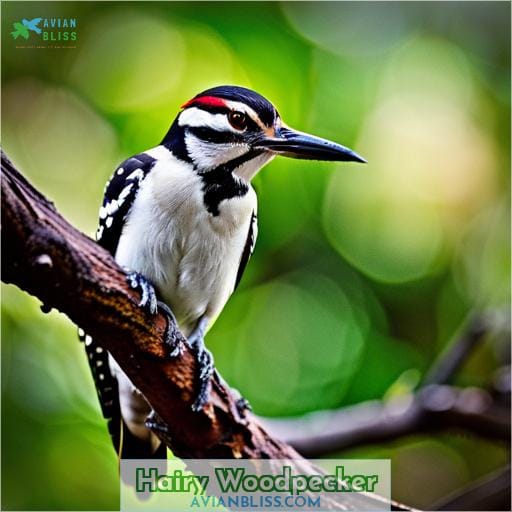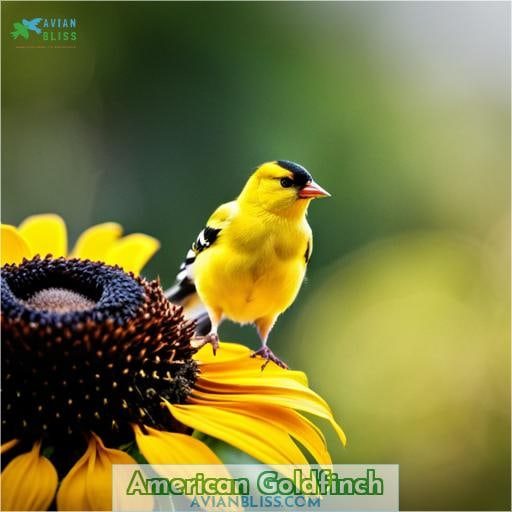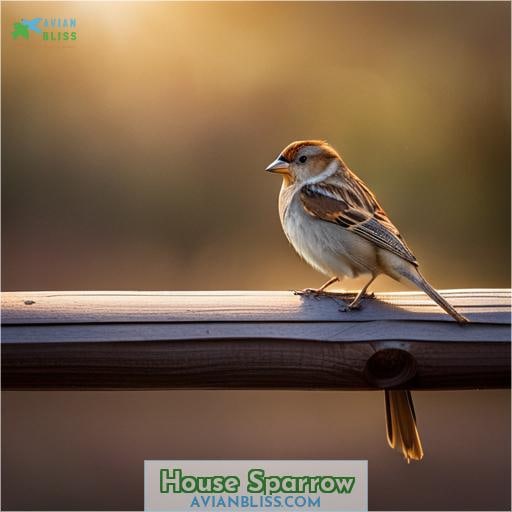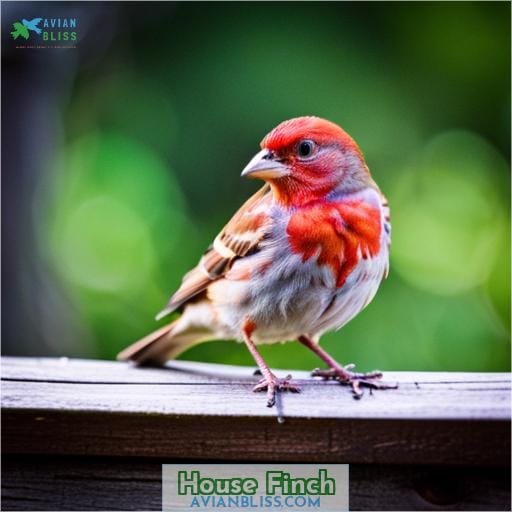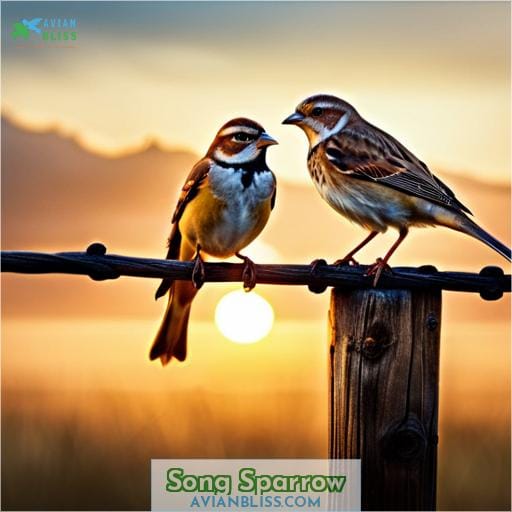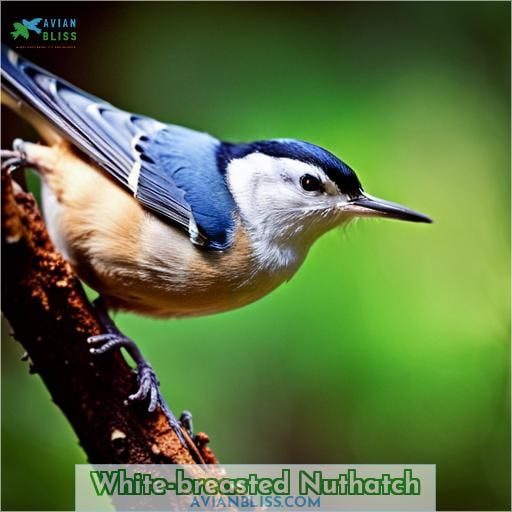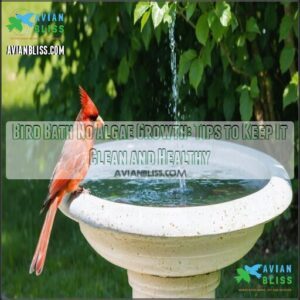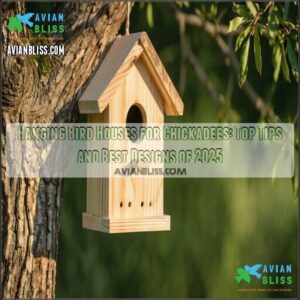This site is supported by our readers. We may earn a commission, at no cost to you, if you purchase through links.
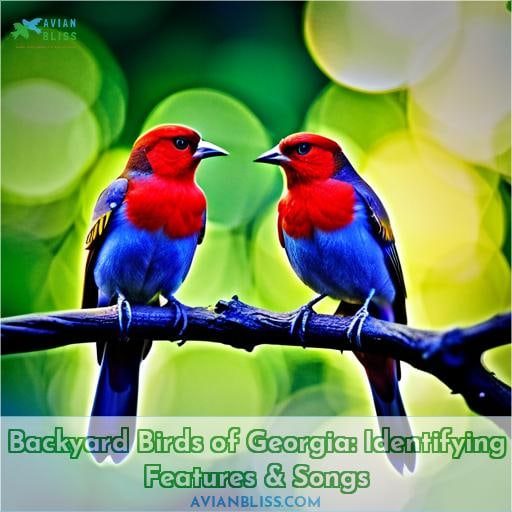 Diving into the backyard bird world of Georgia is like taking a leap into a technicolor dream. From American Robins to Downy Woodpeckers, these feathered friends are some of the most recognizable birds in our state – and they can make for an ideal introduction to birding.
Diving into the backyard bird world of Georgia is like taking a leap into a technicolor dream. From American Robins to Downy Woodpeckers, these feathered friends are some of the most recognizable birds in our state – and they can make for an ideal introduction to birding.
With this article, you’ll learn how to identify common backyard birds of Georgia by their features and songs.
So if you’re looking for more information about backyard birds of Georgia or just want to get started with your own observations at home, read on!
Table Of Contents
Key Takeaways
- American Robin: The American Robin has a rufous breast and sings a bubbly song. This bird is common in Georgia.
- Downy Woodpecker: Small in size with a white belly, the Downy Woodpecker has a high-pitched whinny call.
- House Sparrow: An invasive and adaptable species, the House Sparrow is aggressive, resourceful, and common.
- Red-winged Blackbird: Breeding in wetlands, the Red-winged Blackbird sports scarlet-and-yellow shoulder patches.
American Robin
Step outside for a closer look and listen as the familiar American Robin visits your backyard feeders and birdbaths. With rufous breast and head markings, the robin’s bubbly song, filled with clear whistled phrases, rings out as a welcome sign of spring across North America.
The familiar bubbly song of the American Robin, filled with clear whistled phrases, rings out as a welcome sign of spring when it visits backyard feeders and birdbaths across North America.
Range and Characteristics
You’ll often spot the rusty red-breasted American robin rummaging through lawns for worms and insects in neighborhoods across the state. Unmistakable for its cheery song and colorful plumage, this familiar backyard buddy inhabits backyards and woodlands statewide.
Watch for these social opportunists investigating lawns or trees for juicy fruits and bugs. Though abundant, help protect local habitats so future generations can enjoy spotting this iconic harbinger of spring.
Songs and Calls
The robin’s vivid whistling song each spring signifies its melodious return to your yard. Listen closely for the robin’s complex birdsong – a succession of musical phrases, each comprising several varied notes.
Recognize its bubbly caroling to identify robins unseen in treetops. Let these flute-like refrains resound in your mind, imprinting the robin’s cheerful melody.
Appreciate the robin’s enchanting tune as a herald of warmer seasons. Its song brightens long days while your avian companion constructs muddy nests overhead. Soon, fledglings will echo these notes, learning vocalizations from attentive parents nearby.
Cherish the robin’s whistled melodies drifting through your yard each spring.
Downy Woodpecker
The downy woodpecker is a small but splendid backyard visitor, with its white underbelly, black back, and red spot on the male birds. Listen for its distinctive high-pitched whinnying call as these woodpeckers hop along tree trunks and branches in search of insects.
Identifying Features
Look for the small size with white belly and black-striped back to spot the downy woodpecker. Check for the bold black and white face pattern, short bill, lack of wing spots, and barred black and white tail to confirm identification.
Pay attention to white outer tail feathers and listen for the whip-like pik call when searching for downies.
Carry a field guide to reference the red spot on the nape of males and take pictures or scan with binoculars to analyze and enjoy detailed views. A reliable little visitor to backyard feeders across Georgia, this bird rewards birders who know its distinctive markings.
Sounds and Calls
Hear its high-pitched whinnying call as the Downy Woodpecker drums on a tree. Listening for key bird sounds and calls is an essential birdwatching skill for identifying backyard birds in Georgia.
- Short, rapid series of high-pitched peek notes
- Distinctive high, whinnying call
- Rattling calls like a whimper or soft whinny
- Sharp drumming on trees about 8 beats per second
Focus your ears and interpret the sounds to enrich your birding experience. Matching bird calls to sightings creates an intimate connection with nature’s avian wonders.
Hairy Woodpecker
Feel that larger sturdier bill chisel more forcefully as you distinguish this woodpecker from the dainty Downy. The Hairy Woodpecker is adept at excavating into decaying wood for insects, displaying powerful hammering that betrays its assertive size.
Its black and white barred plumage blends into tree bark, obscuring it from sight. Yet its rattling call often gives away the presence of this year-round forest resident.
While similar to the smaller Downy, the Hairy’s larger beak packs more punch. Study this bird’s field marks to tell the two lookalikes apart:
| Field Mark | Hairy Woodpecker | Downy Woodpecker |
|---|---|---|
| Size | Larger 9-11 inches | Smaller 5-7 inches |
| Bill length | Longer than head | Shorter than head |
| White stripes | Bold black and white | Faint black and white |
| Call | Rattling peeks | High-pitched whinnies |
American Goldfinch
Boy, those flashy summer males with their vivid yellow feathers make it easy to spot American Goldfinches visiting your feeders for Nyjer seed and sunflower kernels.
- The males’ bright yellow bodies and black cap contrast sharply with the females’ duller olive-yellow plumage.
- They breed later than other birds, not until late summer when thistle and other weedy plants have ripe seeds.
- To survive cold winters, they fluff up their feathers to trap air and keep warm.
American Goldfinches bring delightful musical trills and warbles to your yard as they travel in busy flocks. Their acrobatic feeding behaviors add excitement as they clamber over feeders, plucking out tiny seeds.
House Sparrow
See the drab sparrows fighting greedily over scattered crumbs. Their invasive presence challenges our native songbirds. Adapting easily to urban environments with their aggressive behavior, these introduced Eurasian immigrants seem determined to claim territory.
From backyard feeders to gas station ledges, they’re after space that used to belong to others. Gorging on readily available grains, the busy broods keep breeding and spreading.
But observe a male displaying his black bib out, wings drooping, as he hops around a receptive female. While problematic, one must respect their resourcefulness. Perhaps plant some native vegetation to invite other birds, providing balance to your yard’s ecosystem.
House Finch
Now, dear old loves, let’s open our peepers to peep those wee rosy readies with their dapper duddies up in that tree yonder.
House finches flutter about Georgia backyards, their rosy-red feathers bright as ripe apples. Observe the crimson hue of the males and plainer brown streaks of the females as they alight on feeders.
Adaptable and curious, they nest in urban areas near humans. Watch the dynamics of the flock, social yet competitive for food.
Note plumage variations among individuals, from deep crimson to faded salmon.
House finches blend into the scenery yet add a pop of color if you know where to look.
American Crow
You’ll find these intelligent and adaptable birds living in various habitats across Georgia. Recognizable by their large, all-black appearance with an iridescent sheen. American Crows are incredibly intelligent.
Using tools to get food and solving complex problems. Their loud caw vocalizations actually form a complex language. Highly social, they congregate in large flocks at roosts or around abundant food sources.
Omnivorous crows adapt readily to urban environments, scavenging for anything edible. Offer peanuts, corn, or suet to attract them to your backyard. Form lifelong bonds with mates and even offspring from previous years.
Witnessing crow behavior and intelligence firsthand creates a sense of connection and appreciation for these remarkable birds.
Song Sparrow
With its melodious trill lifting your spirits, the diminutive Song Sparrow brightens soggy Georgia thickets like a feisty feathered jewel.
- Cheerful bubbling notes
- Energetic insect hunting
- Grass stems woven into cup nests
- Repeated short whistles and buzzy trills
- Distinct breast spot and gray face stripes
Nesting low in weeds and grasses, the adaptable Song Sparrow thrives in wet open areas statewide. Watch for these birds flickering through brush piles with a flash of white outer tail feathers.
Backyard birders eagerly await the first spring songs announcing another breeding season soon to unfold. Offer millet and black oil sunflower seeds to draw singing Song Sparrows out of hiding.
White-breasted Nuthatch
Let’s discover the White-breasted Nuthatch with its compact size, unique behaviors, and distinctive sounds! This energetic little songbird’s often seen scurrying headfirst down tree trunks as it searches for insects.
Offer sunflower seeds, peanuts, and suet to attract nuthatches to your backyard feeders.
Listen for their loud, nasal yank calls repeated rapidly. Look for blue-gray upperparts, white face and underparts, and black cap in males.
Nuthatches nest in tree cavities, so consider putting up nest boxes suitable for smaller birds. Participate in citizen science projects like the Great Backyard Bird Count to contribute sightings of white-breasted nuthatches and other birds for research.
With a little preparation, you can enjoy hosting these active, agile birds in your yard!
| Behavior | Habitat | Identification |
|---|---|---|
| Headfirst | Mature forests | White face, underparts |
| on trunks | Urban areas | Black cap on males |
| Loud yank | Nest in tree cavities | Blue-gray upperparts |
| calls | Compact, short-tailed woodpecker | |
Red-winged Blackbird
You can often see red-winged blackbirds perching on cattails singing conk-la-ree! in marshes near grasslands during spring in Georgia.
These striking birds breed in wetlands, where the males’ scarlet-and-yellow shoulder patches signal territory.
Come fall, they gather by the thousands before migrating south.
Though abundant, habitat loss threatens them. Try attracting redwings to your yard by providing a birdbath or other small water source.
With conservation measures like protecting wetlands, future generations can continue enjoying these familiar birds singing conk-la-ree!
Conclusion
Not sure what to do when you spot a bird in your backyard? Georgia’s backyard birds come in all shapes and sizes, from the colorful Northern Cardinal to the delicate House Wren.
With the help of this guide, you can learn about the diverse feeding habits of various bird species, such as the preference of Mourning Doves for seeds and suet, and identify the most common backyard birds of Georgia by their features, song, and calls. From the melodious notes of the American Goldfinch to the cheep of the House Sparrow, backyard birds offer a delightful opportunity to explore the beauty of nature.
So get out your binoculars, open your ears, and see what feathered friends you can spot in your backyard!

